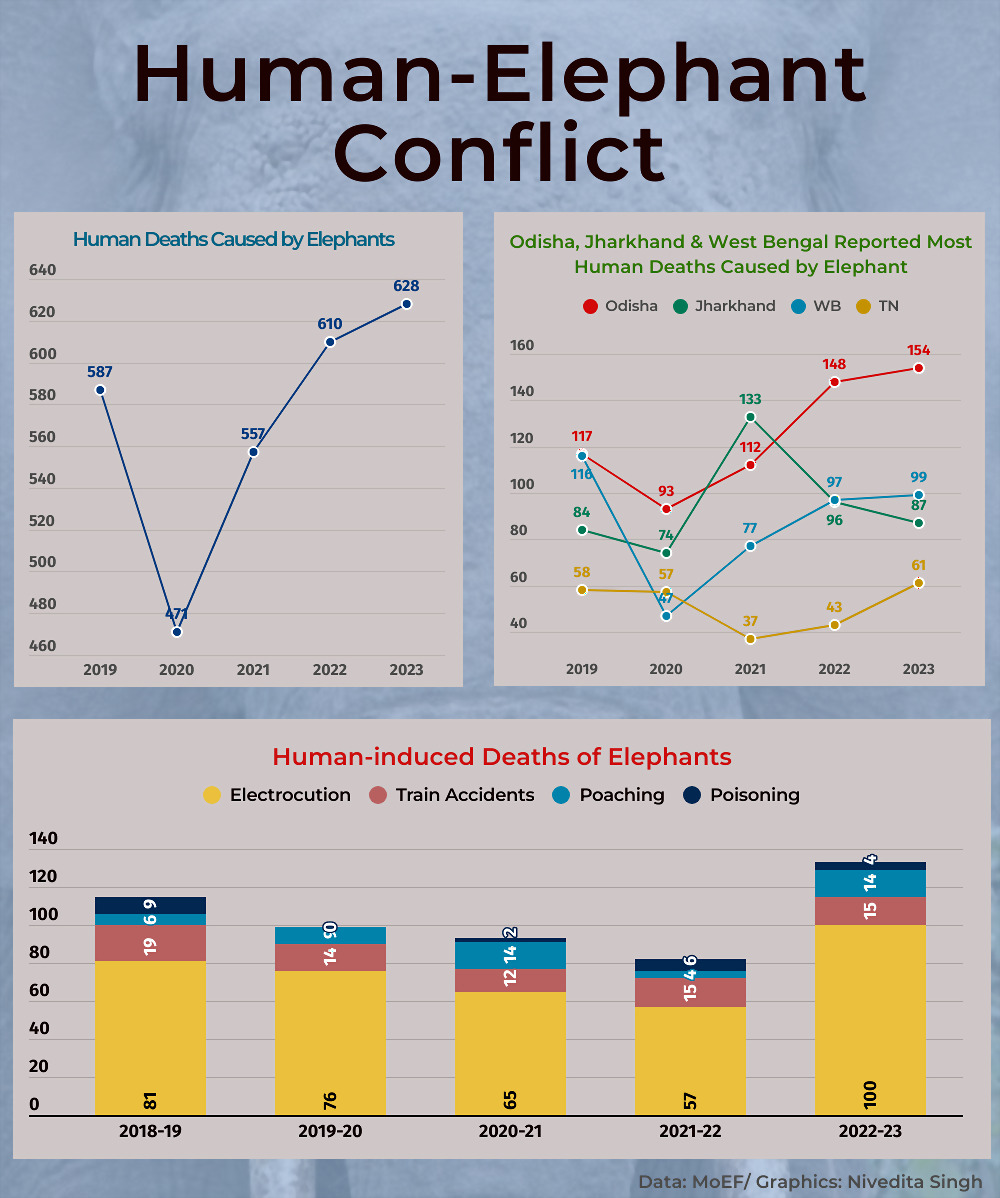
views
The numbers from the Ministry of Environment, Forest and Climate Change show that 2,853 humans have been killed since 2019 in conflict with elephants. At least 628 were killed in the calendar year 2023 alone — accounting for almost two deaths per day. The lowest was in 2020 when 471 lives were claimed in elephant-human conflict — more than one per day.
A total of 349 humans were killed in tiger attacks across the country between 2019 and 2023. Calendar year 2022 saw the highest number of these deaths at 110, the data shows.
Among the states, Odisha (624), Jharkhand (474) and West Bengal (436) have reported the highest human deaths in conflict with elephants between the 2019-23 period. These states were accountable for almost half of the deaths in the elephant-human conflict during the said period.
On the other hand, with 200 human deaths in tiger attacks between 2019-2023, Maharashtra tops the chart in casualties in the conflict with the big cat. It is followed by Uttar Pradesh (59); Madhya Pradesh (27) and Karnataka (14). These states account for 300 deaths collectively out of the 349 deaths in tiger-human conflicts.


Death of animals in the conflict
A total of 519 elephants were killed by human actions and interventions between 2018-19 and 2022-23, the ministry data shows. Electrocution, with 376 deaths, has been the biggest contributor in elephant deaths.
On the other hand, 628 tigers have died across the country since 2019. The breakdown of the tiger deaths due to human interventions was not available. As per the National Tiger Conservation Authority (NTCA), 2023 saw the highest number of tiger deaths in India at 178.
Human-wildlife conflict
The major reasons, according to the ministry, for the human-wildlife conflict were degradation and fragmentation of the habitat, depletion of natural prey base, resource use in the wildlife habitat by human beings for various reasons like grazing, fuel wood, grass removal and exploitation of wild fruits.
Also, increase in population of wild animals due to sustained protection efforts also results in these conflicts apart from change in crop patterns, presence of stray dogs and cattle in forest fringe areas.
A number of steps were taken by the Union government to provide financial assistance to states and Union Territories under the ‘Development of Wildlife Habitats’ and ‘Project Tiger and Elephant’ for management of wildlife and its habitat in the country.
Various other centrally sponsored schemes being implemented by the ministry contribute to the improvement in the natural habitat of elephants by augmenting water sources, planting of fodder trees, and regeneration of bamboo. Such schemes include Development of Wildlife Habitat and Project Tiger.
The Compensatory Afforestation Fund Act 2016 and the rules made under that also provide for use of the fund for development of wildlife habitats, including for elephants, and establishment of animal rescue centres, which also contribute to reduction in human elephant conflict.
















Comments
0 comment